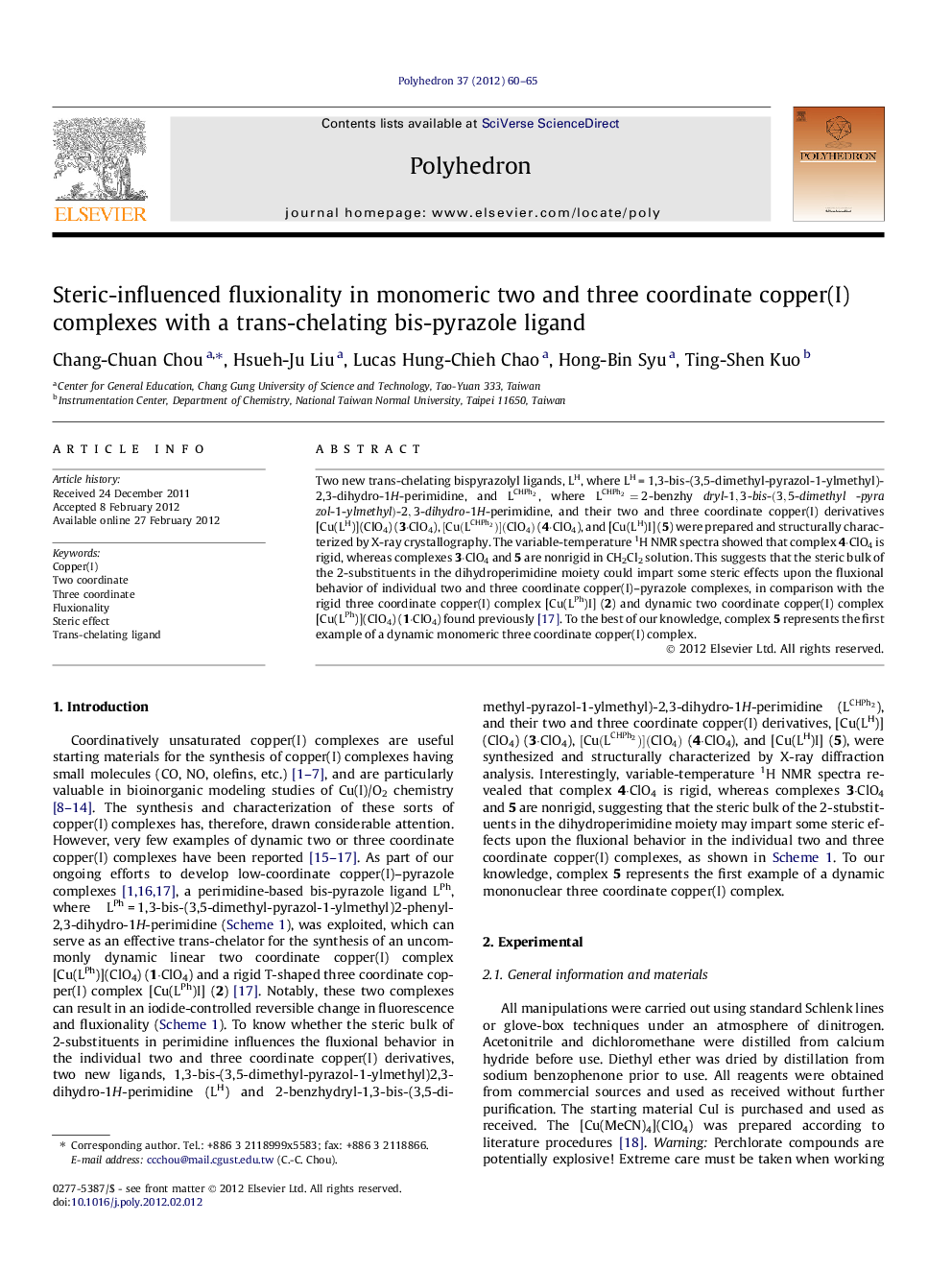| Article ID | Journal | Published Year | Pages | File Type |
|---|---|---|---|---|
| 1334788 | Polyhedron | 2012 | 6 Pages |
Two new trans-chelating bispyrazolyl ligands, LH, where LH = 1,3-bis-(3,5-dimethyl-pyrazol-1-ylmethyl)-2,3-dihydro-1H -perimidine, and LCHPh2LCHPh2, where LCHPh2=2-benzhydryl-1,3-bis-(3,5-dimethyl-pyrazol-1-ylmethyl)-2,3-dihydro-1H-perimidineLCHPh2=2-benzhydryl-1,3-bis-(3,5-dimethyl-pyrazol-1-ylmethyl)-2,3-dihydro-1H-perimidine, and their two and three coordinate copper(I) derivatives [Cu(LH)](ClO4) (3·ClO4), [Cu(LCHPh2)](ClO4)[Cu(LCHPh2)](ClO4) (4·ClO4), and [Cu(LH)I] (5) were prepared and structurally characterized by X-ray crystallography. The variable-temperature 1H NMR spectra showed that complex 4·ClO4 is rigid, whereas complexes 3·ClO4 and 5 are nonrigid in CH2Cl2 solution. This suggests that the steric bulk of the 2-substituents in the dihydroperimidine moiety could impart some steric effects upon the fluxional behavior of individual two and three coordinate copper(I)–pyrazole complexes, in comparison with the rigid three coordinate copper(I) complex [Cu(LPh)I] (2) and dynamic two coordinate copper(I) complex [Cu(LPh)](ClO4) (1·ClO4) found previously [17]. To the best of our knowledge, complex 5 represents the first example of a dynamic monomeric three coordinate copper(I) complex.
Graphical abstractThe structural rigidity of monomeric two- and three-coordinate copper(I) complexes of perimidine-based trans-chelating bispyrazolyl ligands can be individually influenced by the steric bulk of the 2-substituents in the dihydroperimidine moiety.Figure optionsDownload full-size imageDownload as PowerPoint slideHighlights► Synthesis of trans-chelating bispyrazolyl ligands. ► Synthesis and characterization of low coordinate copper(I) complexes having fluxional behavior. ► Steric effects of the supporting ligands. ► The influence of fluxional behavior on fluorescence quenching.
